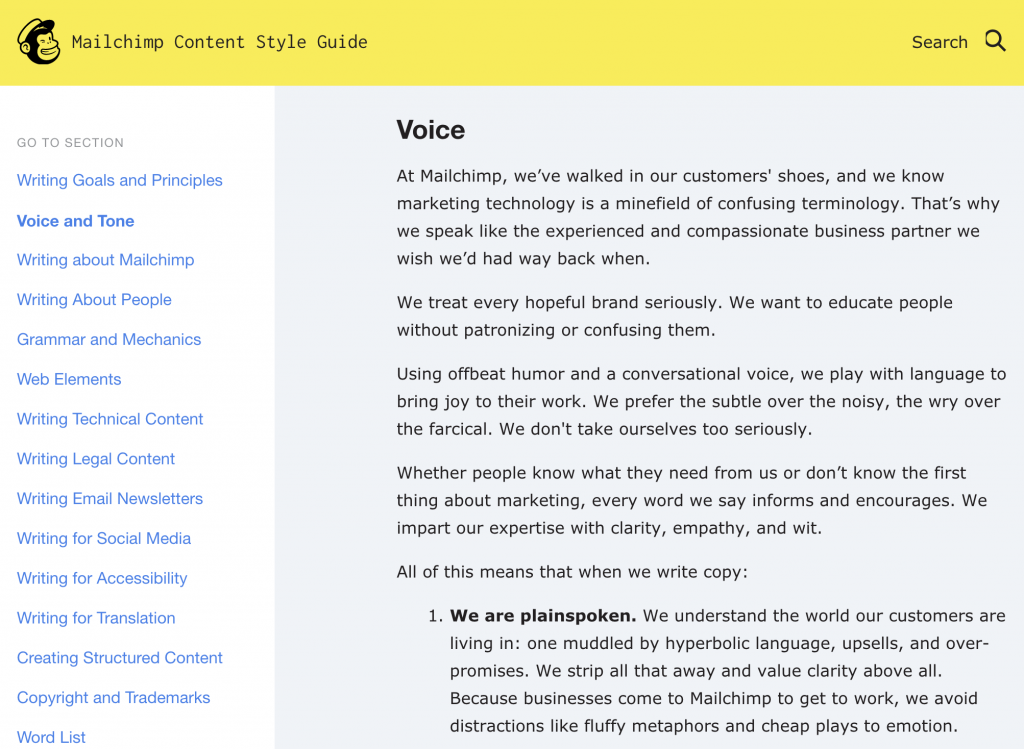How to Build a Unique & Recognizable Lending Brand

When you think about recognizable brands, what comes to mind? Maybe you envision the Nike swoosh or Apple’s simple logo. In today’s digital world, you might also conjure up Google’s search experience or Amazon’s ecommerce platform.
Why do these brands’ high level of recognition matter? Put simply, it influences trust and buying decisions. While you might take a number of factors into consideration when buying, say, a new pair of running shoes, brand still impacts that choice in a big way. According to Gallup, consumers who identify with a brand are likely to spend twice as much on that brand’s products or services.
And yet branding is something that’s widely neglected by lending institutions. Aside from mega-lenders with massive marketing budgets, many lenders simply create a logo, write up some advertising materials, and move on.
While it’s unlikely most mortgage lenders will reach household-name status, building a brand is still a critical way to reliably attract and convert customers. Executed wisely over time, these strategies can help you boost recognition among your target audience, gain a powerful competitive advantage, increase customer loyalty, and grow your market share.

Why does branding matter for mortgage lenders?
David Ogilvy, known as the “Father of Advertising,” once said, “Brand is something that remains when our factory is burned.” In other words, even as cash flows fluctuate and market cycles change, the brand you’ve built remains. Building a brand gives you a valuable asset that can help ensure future demand and profitability.
In this way, you can think of your brand as a signal. When customers see your logo, advertisement, or name, they’ll retrieve information about your brand stored in their minds. These emotional connotations will happen whether you’ve intentionally built a brand or not. They could be accurate or based on assumptions. They could be positive or negative. Why not take control of the narrative?
Competitive advantage
Because building a brand helps you connect on an emotional level with customers, it provides a powerful competitive advantage.
As a lender, you know that most lending institutions offer similar rates and product offerings. That means you need to differentiate yourself in other ways. By building a brand around your unique value—whether that’s best-in-class customer service, reliability and speed, or something else—you’ll solidify an edge that’s hard for your competition to replicate.
Customer loyalty
A brand is built over time and numerous touch points. Once established, a strong brand can help not only establish a presence in the minds of leads, but also create a powerful bond with existing customers.
By crafting a brand presence that’s recognizable and unique, you’ll be able to influence customers’ perceptions and attitudes towards your company. Because of this dynamic, branding has the ability to make customers committed to your lending institution for reasons beyond product offerings and pricing.
3 steps to build a unique, recognizable lending brand
Building a brand in any industry takes time, dedication, and consistency. Still, there are actions you can begin taking now that will pay dividends over time. Make these habits a part of your marketing agenda, and you’ll see your brand recognition and perception build.
1. Get crystal clear on your unique selling proposition (USP).
What makes you different from your competition? How would you convince a prospective customer to choose your particular lending institution?
While you might intuitively know the answers to these questions, it’s important to document what makes your company stand out. Your unique selling proposition (USP) is the single thing that makes your company better than your competition. Knowing and being able to describe this will make all of your marketing and branding decisions so much easier.
When writing your USP, consider the following guidelines:
—Focus on what your target customers value. You want your USP to resonate with your audience, not simply inspire those within your company.
—Make your statement specific and concrete, but descriptive of what your company offers as a whole. You should be able to use your USP across departments of your company.
—Skip the marketing jargon. Write your USP as a genuine, heartfelt description of what you fulfill as a company.
—Consider your competition. What USP differentiates you from the pack?
—Be true to who you are. It might sound obvious, but don’t choose an aspirational USP that describes where you want to be. Your USP should reflect what you do well now—something you can defend and back up.
Examples of USPs from other industries include Airbnb’s “book unique places to stay and things to do” and Stripe’s “the new standard in online payments.” Both of these statements straightforwardly communicate the brands’ value to customers and set the tone for the rest of the companies’ marketing materials.

2. Hone your communications.
Now that you’re clear on your USP, it’s time to implement that message in ways that will resonate with your audience. That means developing a clear brand identity.
If you work for an established lending institution, chances are you already have a logo and other visual materials. Those design assets are a part of your visual identity that may be expensive or impossible to change at this point. What you have more control over are the voice, tone, and message within communications you have with leads and customers.
Tone & voice
When building a brand, you don’t simply want to create a USP, post it on your site, and call it a day. Instead, you need to infuse that value proposition into your brand’s personality. That means developing a tone and voice within all your communications that match the value you’re offering your customers.
Let’s go back to the Airbnb example. Since Airbnb’s expressed value includes the word “unique,” they’re implicitly positioning themselves as an industry disrupter. Similarly, since they’re in the business of syncing customers up with trip accommodations, it makes sense that their brand tone and voice are casual, conversational, fun, and, in their words, “spirited.” (Check out their entire content strategy here.)
As a mortgage brand, on the other hand, you might decide that your brand tone and voice should be approachable, trustworthy, established, and friendly. Think through what will resonate with your audience and what will communicate your USP most successfully.
Consistent communication
Once you’ve documented your USP and brand tone and voice, it’s time to infuse that personality into all of your communications. Sound daunting? Take this one step at a time. For instance, if you’re running ads on social media or search engines, try writing from your brand persona’s perspective. Rework your marketing emails into messages that express your USP. Use each touch point as a chance to reinforce your brand identity to your leads and current customers.
As you gain more experience writing in your brand voice, build out a style guide that instructs team members across your company how to communicate various common phrases and which best practices to use within emails, site copy, etc. (You can find a few examples of style guides here.)

3. Deliver on your brand promises.
Of course, none of the above exercises matter if you don’t deliver on the value propositions you’ve identified. You can shout your differentiators from the rooftops, but your customers won’t care unless they’re actually experiencing what makes you different as a lender.
Becoming a trustworthy lending institution whose reputation precedes it means consistently offering top-notch customer service, honing your processes, and always improving. Over time, your customer base will associate your brand with reliability, helpfulness, and trustworthiness. This perception will validate and amplify your marketing efforts, creating a solid stream of mortgage leads.
Exceptional service
There’s nothing worse than being drawn in by a brand’s marketing only to be disappointed by your interaction with them. And conversely, as a brand, there’s no point in investing in marketing if your service isn’t great.
Tackling customer service issues is a topic in and of itself. From a marketing perspective, though, there are a few ways to assess where your brand perception lies:
—Take note of online reviews. The results of a quick Google search for your brand name strongly influence how leads perceive your service. If you haven’t already, assess reviews on Google Reviews, NerdWallet, Zillow, Bankrate, and more. If they’re less-than-positive, audit those reviews for common themes and take that feedback to your team.
—Survey your customers. What better way to monitor customer satisfaction than asking for feedback? Look into automated services that ask borrowers who have completed the lending process with you how likely they’d be to recommend your services to a friend. This measurement, known as a Net Promotor Score (NPS), is a common way to keep tabs on customer satisfaction.
—Get to know borrowers on a personal level. Take the survey idea one step further and interview a few of your customers about their experiences. Don’t take too much of their time; just ask a few questions about what they enjoyed and what they’d change. These conversations could also be used for testimonials and case studies—powerful content pieces that further build a perception around your brand.
By doubling down on customer experience, you’ll naturally reinforce the value proposition your company offers. This is a necessary step towards building a brand worth marketing.

Customer education
Today’s borrowers, most often millennials, long for insight and help during the lending process. A 2019 study from the National Endowment for Financial Education found that only 24% of millennials are financially literate.
Beyond setting up homeowners for success, education builds recognition and trust with potential borrowers. A massive 90% of today’s prospective home buyers use online resources to research homes and the mortgage process before they speak to a real estate agent, mortgage broker, or lender. That leaves plenty of room for lenders to offer expertise via digital content, marketing, and outreach.
Homeownership education can come in many forms, including:
—Content like articles, videos, and infographics
—One-on-one counseling or support
—Partnerships with community programs and groups that provide financial literacy resources
—Reports that compare loan products and pricing
—A directory of resources for prospective homeowners
Regardless, by creating an informative presence, then offering ongoing help for confused buyers, lenders can build a brand synonymous with support, service, and trust.
An essential piece of a successful marketing program
You can’t build a recognizable brand in a month. But if you’re going to send out marketing materials and communicate with customers and leads anyway, why not make those communications consistent? If you’re going to run ads anyway, why not use them strategically to create emotional connections? Before you know it, you’ll have a powerful, valuable brand that borrowers seek out by name.


